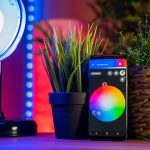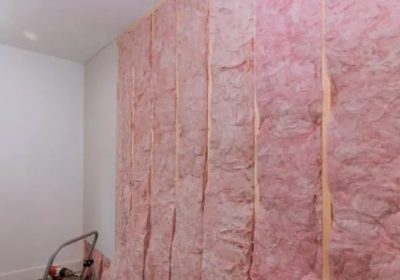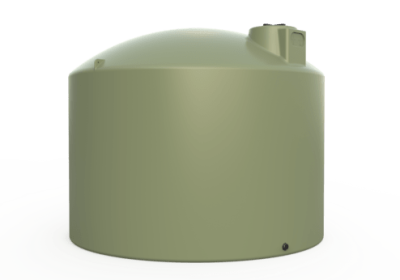How Tech Innovations Are Shaping Interior Design and Home Décor
The Intersection of Art and Technology
The world of interior design and home decor is constantly evolving, with new technologies and innovations making their way into our homes every day. From smart thermostats and lighting systems to 3D printing and virtual reality, technology is transforming the way we decorate and design our living spaces. However, technology isn’t just about function. It’s also about art, and how technology is intersecting with art to create new and exciting possibilities for interior design.
Technology has always played a role in interior design, but in recent years, it has become increasingly important. With the rise of smart home technology, designers and homeowners alike are looking for ways to incorporate these innovations into their homes in a seamless and aesthetically pleasing way. From connected appliances to voice-activated assistants, technology has the potential to make our homes more efficient, convenient, and enjoyable.

3D printing
One of the most exciting developments in this space is the integration of technology with traditional art forms. For example, 3D printing has enabled artists and designers to create custom furniture and home decor pieces that were previously impossible to make by hand. This has opened up a whole new world of possibilities for designers who are looking to create unique and personalized living spaces.
In addition to 3D printing, virtual reality has also had a significant impact on interior design. With VR technology, designers can create virtual models of their designs and allow clients to experience them in a realistic way. This has made the design process more interactive and collaborative, allowing designers to create spaces that truly meet their clients’ needs and desires.
Digital Art Installations
Another way that technology is intersecting with art in interior design is through digital art installations. These installations use screens and projectors to display digital images and videos, creating a dynamic and immersive visual experience for viewers. This is a great way to add a unique and modern touch to any living space, and it can be used to create a variety of different moods and atmospheres.
One of the most exciting examples of this type of technology is the use of OLED screens in interior design. OLED screens are thin, flexible, and produce high-quality images with rich colors and deep blacks. This makes them ideal for creating digital art installations that can be seamlessly integrated into any living space. OLED screens can be used to create everything from wall-sized murals to dynamic lighting installations that change with the mood of the room.
In addition to these more high-tech applications of technology in interior design, there are also a number of more subtle ways that technology is shaping the world of home decor. For example, smart lighting systems can be used to create a variety of different lighting effects, from soft and warm to bright and energizing. This can help to set the mood of a room and create a more comfortable and relaxing environment.
Smart Materials
Another way that technology is changing the world of home decor is through the use of smart materials. These materials can change their color, texture, and other properties based on different factors, such as temperature or humidity. This can be used to create dynamic and interactive home decor pieces that respond to their environment in real-time.
Of course, with all of these new technologies comes a whole new set of challenges for interior designers and homeowners. One of the biggest challenges is finding ways to integrate these technologies into living spaces in a way that is seamless and visually appealing. This requires a deep understanding of both technology and design principles, as well as a willingness to experiment and take risks.
Another challenge is staying up-to-date with the latest technological trends and innovations. With new technologies emerging every day, it can be difficult to keep up with the latest developments in the field. This requires designers and homeowners to stay informed and engaged with the latest news and developments, and to be willing to experiment with new ideas and technologies as they become available.
Despite these challenges, the intersection of art and technology in interior design and home decor is a fascinating and rapidly evolving field. As technology continues to advance, we can expect to see even more exciting developments in the years to come. From augmented reality and artificial intelligence to new materials and fabrication methods, the possibilities for innovation are endless.
At the same time, it’s important to remember that technology is just one tool in the designer’s toolbox. While it can certainly enhance and elevate the design process, it’s not a substitute for good design principles and aesthetic sensibilities. Ultimately, the best interior designs are those that balance the latest technologies with timeless design principles to create spaces that are both functional and beautiful.
As we look to the future of interior design and home decor, it’s clear that technology will play an increasingly important role in shaping the way we live, work, and play. Whether it’s through the use of 3D printing, virtual reality, or digital art installations, designers and homeowners alike are embracing technology as a way to create more dynamic, personalized, and innovative living spaces.
If you’re interested in exploring the intersection of art and technology in your own home, there are a few key things to keep in mind. First and foremost, it’s important to stay informed and up-to-date on the latest technological developments in the field. This means keeping up with the latest news and trends, attending industry events and conferences, and networking with other designers and homeowners who are also interested in this space.
Second, it’s important to approach technology as a tool for enhancing your design process, rather than as an end in itself. This means thinking carefully about how technology can be integrated into your design in a way that enhances its functionality, beauty, and overall appeal.
Finally, it’s important to experiment and take risks. While not every new technology or design trend will work for every space or client, it’s important to be willing to try new things and push the boundaries of what’s possible. By embracing the latest technologies and design trends, you can create living spaces that are truly unique, innovative, and inspiring.
One of the most exciting ways that technology is shaping the field of interior design is through the use of 3D printing. 3D printing is a process of creating three-dimensional objects by layering material on top of itself. This technology has been around for several years, but it’s only recently become more accessible and affordable for designers and homeowners.
With 3D printing, designers can create custom furniture, lighting fixtures, and decorative accessories that are truly one-of-a-kind. They can experiment with different shapes, sizes, and materials, and can create pieces that are tailored to the specific needs and tastes of their clients.
One of the most exciting things about 3D printing is its potential to revolutionize the way we manufacture and produce goods. With 3D printing, it’s possible to create objects on demand, without the need for large-scale manufacturing facilities or extensive supply chains. This has the potential to drastically reduce waste and increase efficiency, making the design process more sustainable and environmentally friendly.
Another exciting way that technology is transforming the world of interior design is through the use of virtual and augmented reality. These technologies allow designers to create immersive, interactive experiences that can help clients visualize and experience their design ideas in a more tangible way.
With virtual reality, designers can create 3D models of their designs and allow clients to “walk through” them, experiencing the space as if they were actually there. This can be a powerful tool for helping clients understand how different design elements will work together, and for making design decisions more quickly and confidently.
Augmented reality, on the other hand, allows designers to overlay digital images and information onto the physical world. This can be particularly useful for product demonstrations and interactive installations, allowing users to interact with digital elements in real-time and in a physical space.
In addition to these technologies, there are also a number of new materials and fabrication methods that are shaping the field of interior design. For example, “smart” materials that can change color or shape in response to changes in temperature or other environmental factors are becoming increasingly popular.
Similarly, digital art installations that incorporate lighting, sound, and projection are also gaining in popularity. These installations can be used to create immersive, interactive environments that respond to the movements and actions of the people within them.
Ultimately, the intersection of art and technology in interior design and home decor is an exciting and rapidly evolving field. While there are certainly challenges and risks associated with embracing new technologies and design trends, there are also tremendous opportunities for innovation and creativity. By staying informed, experimenting with new technologies and materials, and taking a bold, imaginative approach to design, designers and homeowners can create living spaces that are truly inspiring and innovative.
Conclusion
In conclusion, the intersection of art and technology in interior design and home decor is a fascinating and rapidly evolving field. From 3D printing and virtual reality to digital art installations and smart materials, technology is transforming the way we design and decorate our living spaces. As we look to the future, it’s clear that technology will continue to play an increasingly important role in shaping the way we live, work, and play. By staying informed, embracing new technologies, and taking risks, designers and homeowners can create living spaces that are truly inspiring and innovative.




![The Dog Podcast Uncovers Startling Truths About What We Feed Our Dogs [Press Release]](https://yourtechnicalhub.com.au/wp-content/uploads/2024/08/dog-food-400x280.jpg)


